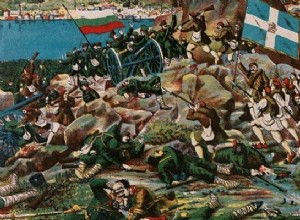Beginning in the 3rd century AD, the crisis of the Roman Empire was caused mainly by the fragmentation of its western part with the arrival and installation of the Germanic peoples. From the third century AD, the Roman Empire began its phase of decline and decay, which eventually resulted in the fr




